Practice Free AZ-104 Exam Online Questions
HOTSPOT
You plan to deploy the following Azure Resource Manager (ARM) template.
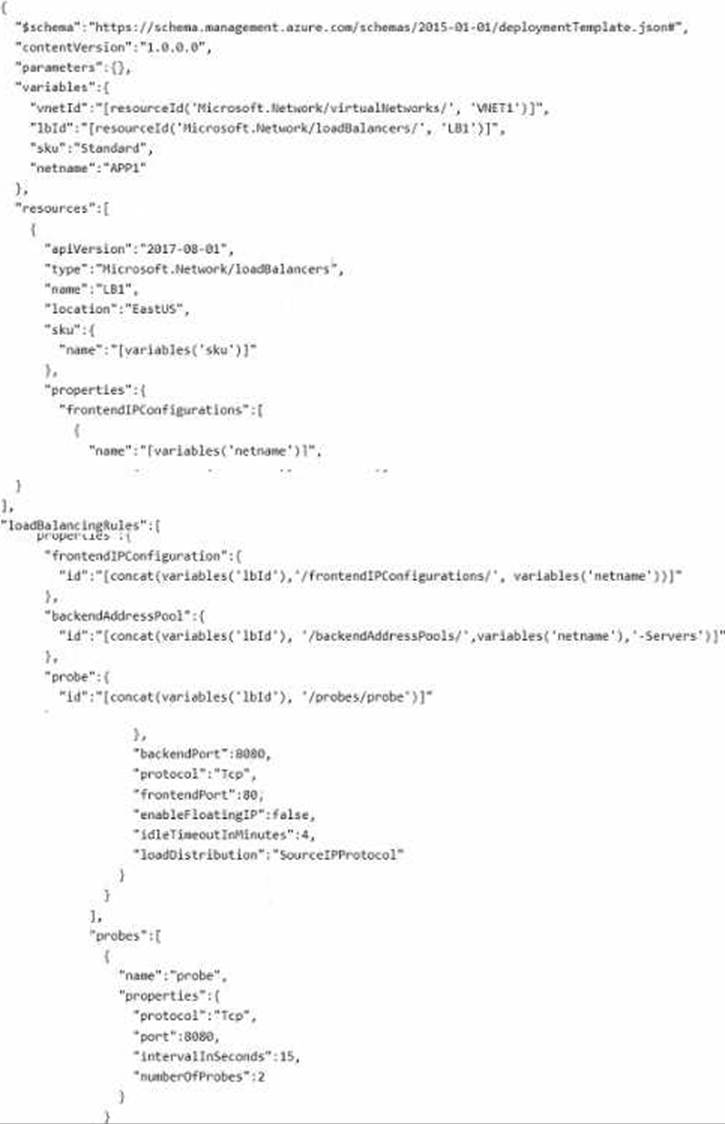
For each of the following statements, select Yes. Otherwise, select No. NOTE: Each correct selection is worth one point.


Explanation:
LB1 will be connected to a subnet named LB1 in VNET1. Yes, this is correct. The template specifies that the load balancer resource named LB1 has a property called frontend IP Configurations, which defines the subnet where the load balancer is located. The value of this property is a reference to the resource ID of the subnet named LB1 in VNET1. You can see this reference in line 38 of the template1.
LB1 can be deployed only to the resource group that contains VNET1. No, this is not correct. The template does not specify a resource group for the load balancer resource, which means it can be deployed to any resource group in the same subscription as VNET1. However, if you want to deploy the load balancer to a specific resource group, you can add a property called resource Group to the reference of the subnet in line 382.
The value of the sku variable can be provided as a parameter when the template is deployed. No, this is not correct. The template defines the sku variable as a constant value of “Standard” in line 9. This means that the value cannot be changed or overridden by a parameter when the template is deployed. If you want to make the sku value configurable, you need to change the variable definition to a parameter definition, and use the parameter reference instead of the variable reference in line 363.
HOTSPOT
You have an Azure AD tenant.
You need to create a Microsoft 365 group that contains only members of a marketing department in France.
How should you complete the dynamic membership rule? To answer, select the appropriate options in the answer area. NOTE: Each correct answer is worth one point.


Note: This question is part of a series of questions that present the same scenario. Each question in the series contains a unique solution that might meet the stated goals. Some question sets might have more than one correct solution, while others might not have a correct solution.
After you answer a question in this section, you will NOT be able to return to it. As a result, these questions will not appear in the review screen.
You need to ensure that an Azure Active Directory (Azure AD) user named Admin1 is assigned the required role to enable Traffic Analytics for an Azure subscription.
Solution: You assign the Network Contributor role at the subscription level to Admin1.
Does this meet the goal?
- A . Yes
- B . NO
A
Explanation:
Your account must meet one of the following to enable traffic analytics:
Your account must have any one of the following Azure roles at the subscription scope: owner, contributor, reader, or network contributor.
Reference: https://docs.microsoft.com/en-us/azure/network-watcher/traffic-analytics-faq
You have an Azure subscription that contains the resources shown in the following table.

All the resources connect to a virtual network named VNet1.
You plan to deploy an Azure Bastion host named Bastion1 to VNet1.
Which resources can be protected by using Bastion1?
- A . VM1 only
- B . contoso.com only
- C . App1 and contoso.com only
- D . VM1 and contoso.com only
- E . VM1, App 1, and contoso.com
You have an Azure subscription that contains the resources shown in the following table.

All the resources connect to a virtual network named VNet1.
You plan to deploy an Azure Bastion host named Bastion1 to VNet1.
Which resources can be protected by using Bastion1?
- A . VM1 only
- B . contoso.com only
- C . App1 and contoso.com only
- D . VM1 and contoso.com only
- E . VM1, App 1, and contoso.com
HOTSPOT
You have an Azure subscription named Subscription1 that contains a virtual network named VNet1.
You add the users in the following table.

Which user can perform each configuration? To answer select the appropriate options in the answer area. NOTE: Each correct selection is worth one point.
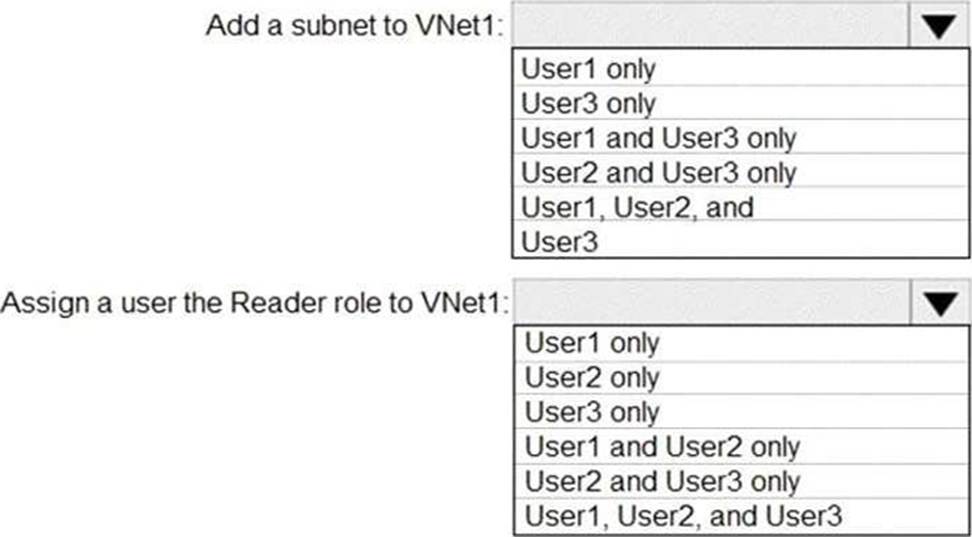
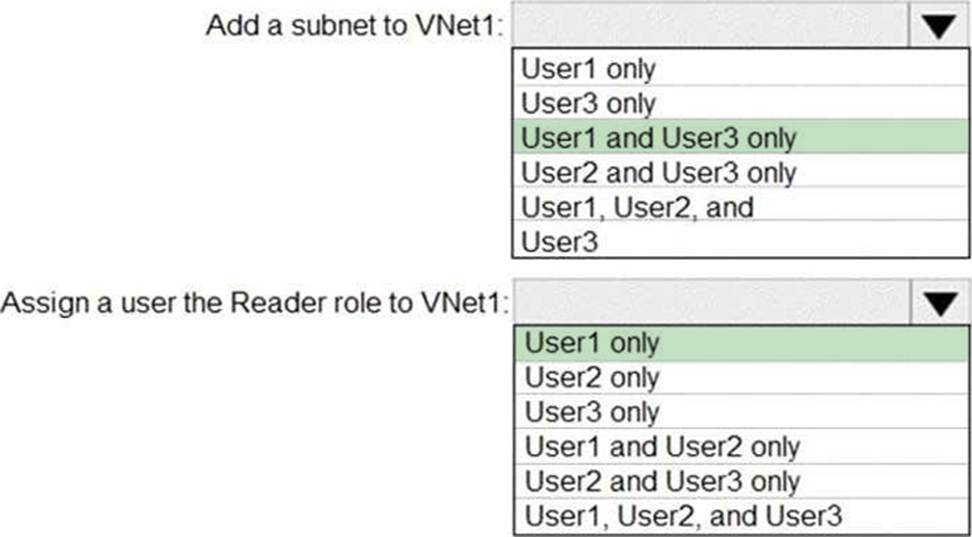
Explanation:
User1 – The Owner Role lets you manage everything, including access to resources.
User3 – The Network Contributor role lets you manage networks, including creating subnets.
User2 – The Security Admin role can view security policies, view security states, edit security policies, view alerts and recommendations, dismiss alerts and recommendations.
HOTSPOT
You have an Azure subscription.
You deploy a virtual machine scale set that is configure as shown in the following exhibit.

Use the drop-down menus to select the answer choice that answers each questions based on the information presented in the graphic. NOTE: Each correct selection is worth one point.
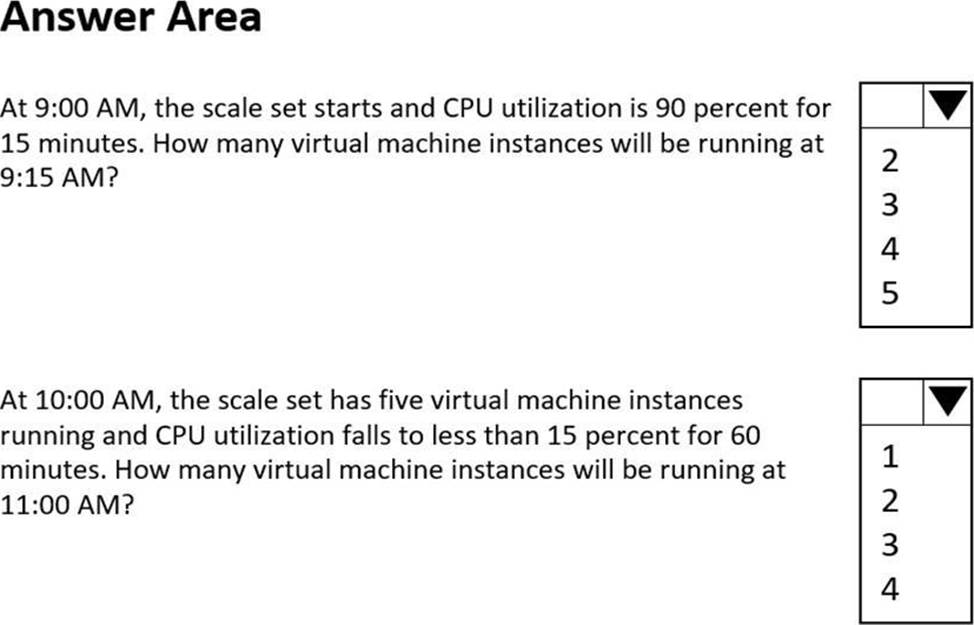
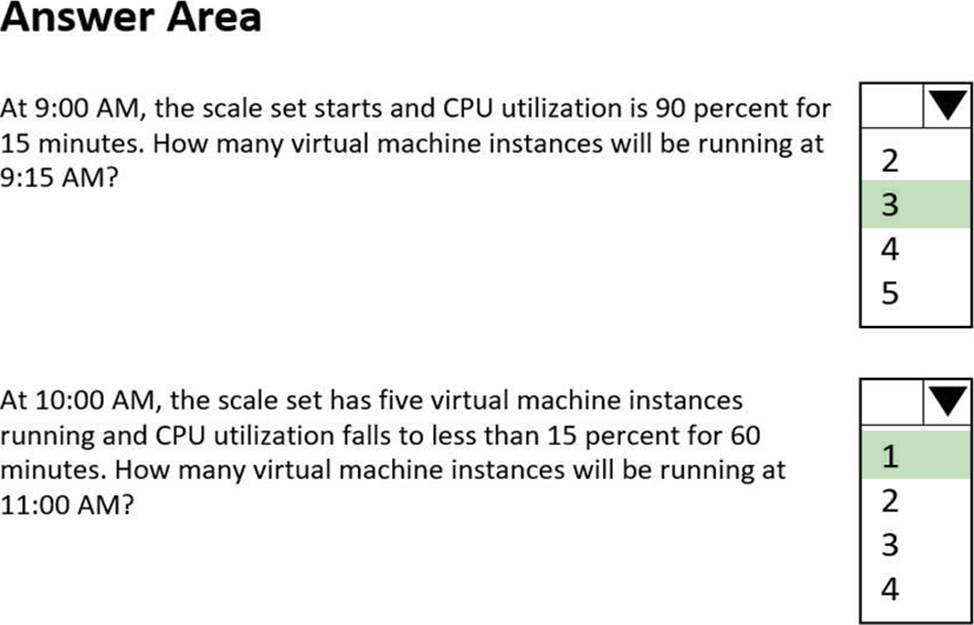
Explanation:
Box-1: 3
Initial starts 2 VM’s 15 minutes have passed. at 10 minutes 1 VM was added we now have 3 VM’s.
Cool down is 5 Minutes before another 10 minute wait cycle starts so the answer is 3.
Box-2: 1
Initial 5 VM’s 60 minutes Pass. 1 VM removed every 15 minute cycle. 10 minutes wait timer plus 5 minute cool down equals 15 minutes cycle. Four 15 minute cycles pass equaling 60 minutes removing 4 VM’s. We have 1 VM left.
Default Scale in and Out Default Durations are 10 minutes with 5 minute cool down.
The default scale set settings in Azure are:
-Minimum number of instances 1
-Maximum number of instances 10
-Scale out CPU threshold (%) 75
-Duration in minutes10
-Number of instances to increase by 1
-Scale in CPU threshold (%) 25
-Number of instances to decrease by -1
https://learn.microsoft.com/en-us/azure/virtual-machine-scale-sets/virtual-machine-scale-sets-autoscale-portal#create-a-rule-to-automatically-scale-in
You have an Azure subscription.
You plan to create an Azure container registry named ContReg1.
You need to ensure that you can push and pull signed images for ContReg1.
What should you do for ContReg1?
- A . Enable content trust.
- B . Add a token.
- C . Enable encryption by using a customer-managed key.
- D . Create a connected registry.
You have an Azure subscription that contains the storage accounts shown in the following table.
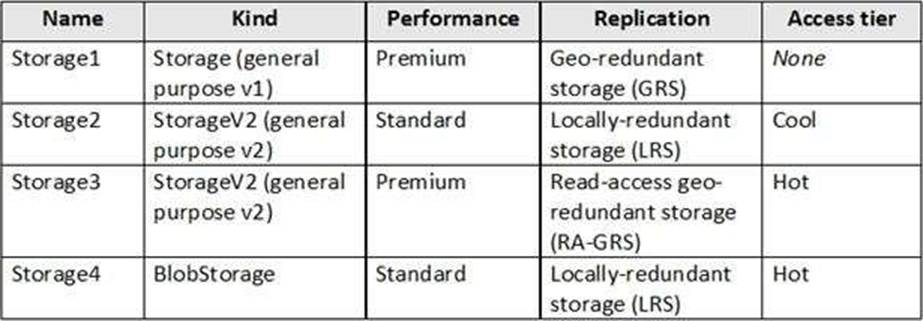
You need to identify which storage account can be converted to zone-redundant storage (ZRS) replication by requesting a live migration from Azure support.
What should you identify?
- A . Storage1
- B . Storage2
- C . Storage3
- D . Storage4
B
Explanation:
https://learn.microsoft.com/en-us/azure/storage/common/redundancy-migration?tabs=portal
You have an Azure subscription that contains an Azure virtual machine named VM1. VM1 runs a financial reporting app named App1 that does not support multiple active instances.
At the end of each month, CPU usage for VM1 peaks when App1 runs.
You need to create a scheduled runbook to increase the processor performance of VM1 at the end of each month.
What task should you include in the runbook?
- A . Add the Azure Performance Diagnostics agent to VM1.
- B . Modify the VM size property of VM1.
- C . Add VM1 to a scale set.
- D . Increase the vCPU quota for the subscription.
- E . Add a Desired State Configuration (DSC) extension to VM1.
E
Explanation:
To create a scheduled runbook to increase the processor performance of VM1 at the end of each month, you need to modify the VM size property of VM1. This will allow you to scale up the VM to a larger size that has more CPU cores and memory. You can use Azure Automation to create a PowerShell runbook that changes the VM size using the Set-AzVM cmdlet. You can then schedule the runbook to run at the end of each month using the Azure portal or Azure PowerShell. For more information, see How to resize a virtual machine in Azure using Azure Automation1.
